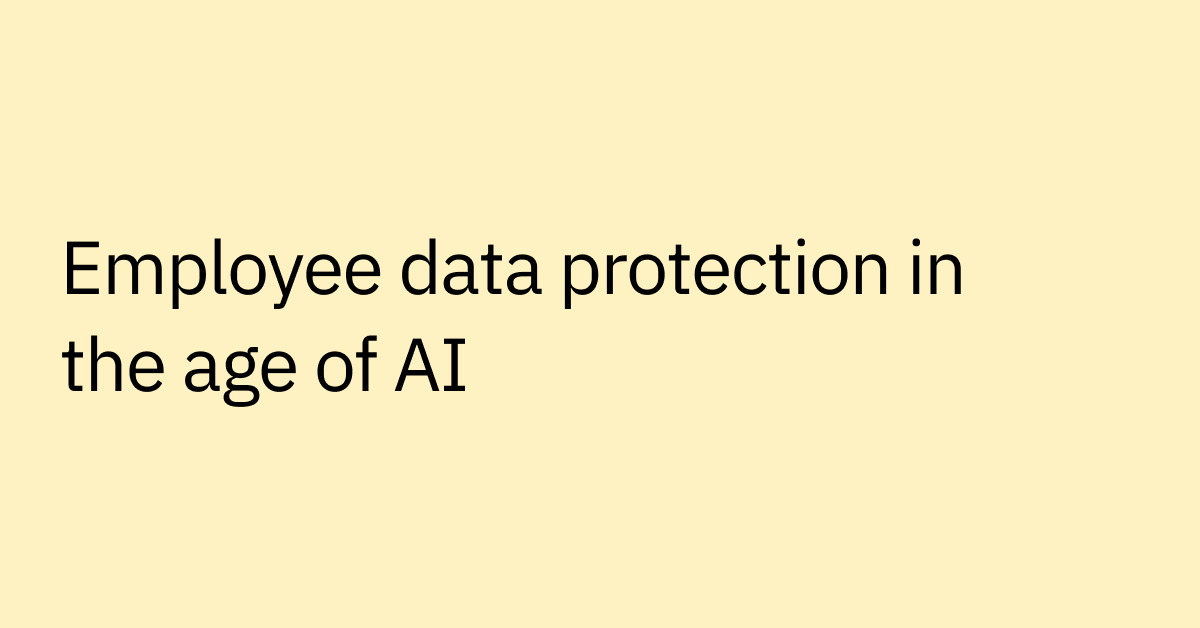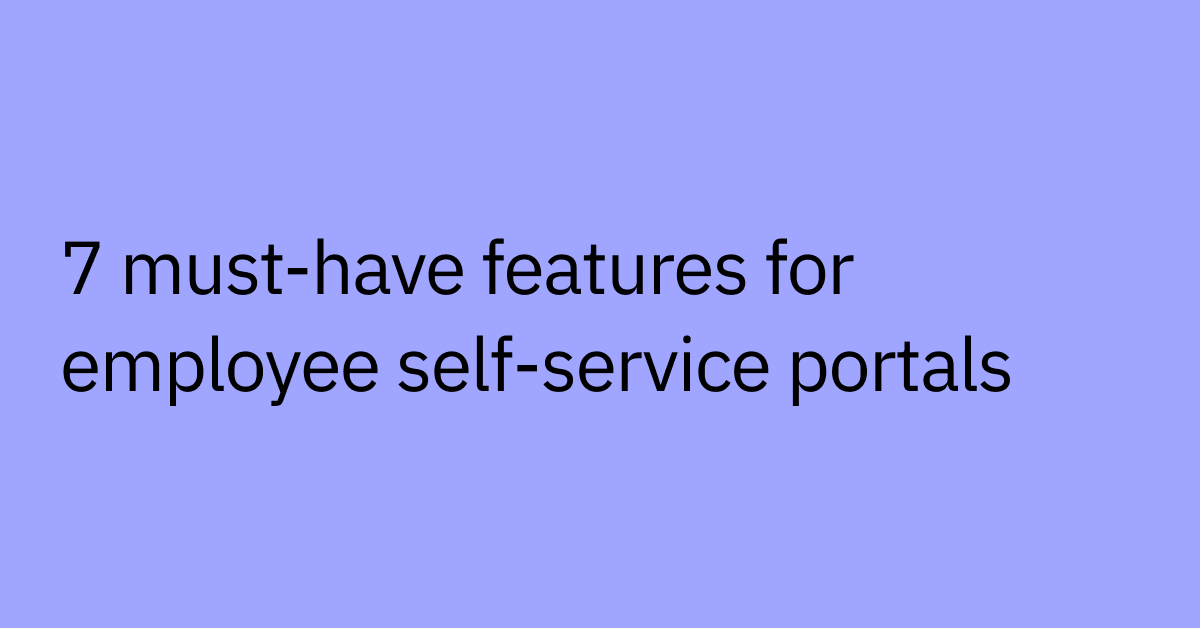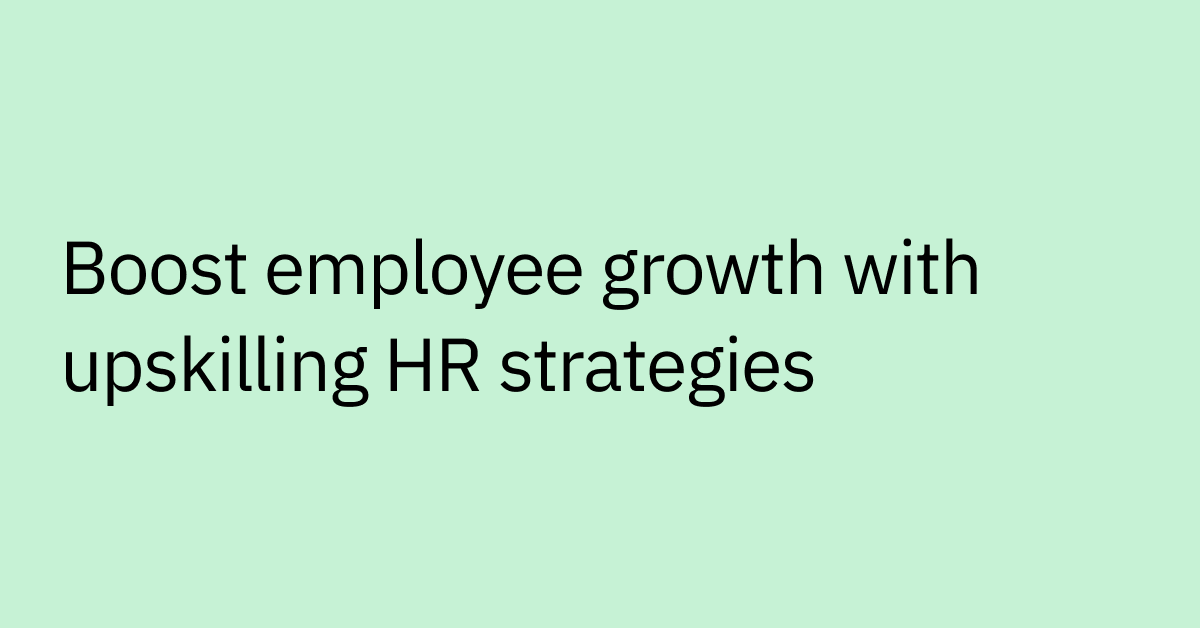Table of contents
Highlights
- Traditional ROI models can fall short when evaluating the true value of agentic AI: They often emphasize cost savings while overlooking harder-to-quantify but critical benefits like productivity gains, agility, and employee experience improvements.
- Agentic AI is able to deliver value across multiple dimensions, including operational efficiency, employee productivity, strategic impact, and cross-departmental scalability, making its ROI broader than point automation tools.
- A structured measurement framework is essential: Tracking metrics such as automation rate, time saved per employee, cost savings, accuracy, adoption, and satisfaction ensures that enterprises can quantify and communicate impact effectively.
- Tailored value articulation is key to stakeholder buy-in: Finance teams care about cost savings, IT and operations prioritize efficiency, and executives focus on strategic growth and competitive advantage.
- Sustaining ROI requires long-term strategies like scaling use cases, driving adoption through change management, measurement and refinement, and avoiding common pitfalls.
While many organizations are experimenting with agentic AI technology, many struggle to quantify its real impact. Everyone seems to be asking the same question: How do we prove AI agents are actually worth the investment?
After all, unlike traditional automation that accelerates predefined tasks, agentic AI promises more: systems that can coordinate end-to-end workflows, adapt decisions based on context, and—when supported by the right integrations, governance, and data—deliver measurable outcomes at enterprise scale.
But the challenge is measuring and communication this value upfront.
Traditional return on investment (ROI) models often miss the broader benefits of agentic AI, focusing solely on direct cost savings while overlooking productivity gains, strategic agility, and experience improvements that are a bit more difficult to quantify.
Agentic AI initiatives that aren’t aligned with traditional measurements also risk being deprioritized or underfunded , even when they're delivering significant but less obvious returns.
It’s time to change that. This guide provides a clear framework for measuring, articulating, and maximizing the value of agentic AI within your organization. You'll discover what ROI looks like in practical terms, where the value actually comes from, and how to think about returns beyond just cost reduction.
Understanding agentic AI different
Before we get into measurement frameworks, let's first establish what makes agentic AI different for businesses and why its ROI calculation requires a fresh approach.
Agentic AI refers to AI systems designed to autonomously pursue complex goals and workflows with limited direct human supervision. They use AI agents that integrate across systems for autonomous decision-making, planning, and adaptive execution to complete multi-step processes.
What makes agentic AI valuable for enterprises is its ability to work across systems simultaneously, including:
- End-to-end workflow completion: Spanning multiple tools and systems like HRIS, ITSM, and identity management platforms
- Dynamic decision-making: Using reasoning engines to adapt to different scenarios and requirements
- Autonomous execution: Taking action without requiring human intervention, with clear escalation paths at every step along the way
These capabilities help agentic AI to deliver measurable business outcomes from early in deployment, turning AI into a major asset when it comes to efficiency and strategic impact.
Understanding agentic AI ROI
Traditional automation follows pre-programmed rules, automation builders are fragile and time consuming to create, while generative AI, by contrast, excels at producing information or answers but on its own does not reliably drive process improvements or systemic impact.
Agentic AI extends beyond both: it can use planning and context to decide on next steps, coordinate actions across multiple tools, and carry out multi-step workflows. When the right integrations, governance, and infrastructure are in place, it can unleash massive efficiencies when deployed at scale across workflows, departments, and at enterprise scale.
For example, when an employee requests software access, agentic AI might:
Check their role and permissions in your identity management system.
Verify approval requirements based on company policies.
Route the request to the appropriate manager or approver.
Provision access once approved.
Update relevant systems and notify the employee.
Provided the system integrations and policies are in place, all of this can happen automatically with minimal human handoffs and manual oversight.
Learn more about how AI agents are streamlining and transforming business operations with our Agentic Automation Engine.
Why measuring agentic AI ROI is essential
Understandably, before making large-scale investments in agentic AI, decision-makers need quantifiable evidence that it will deliver business value. The challenge, though, is that traditional automation metrics often fail to capture the full impact of agentic AI.
Here's why proving agentic ROI matters:
- It separates agentic AI from standard automation. Traditional metrics—like cost-per-ticket or handle time—don’t show the value of autonomous reasoning and action across systems. ROI proof points demonstrate how agentic AI unlocks outcomes beyond what RPA or chatbots can deliver.
- It accelerates leadership buy-in. Your C-suite and exec team need hard numbers, not vendor promises. Quantifiable agentic ROI gives them confidence to expand deployments across departments instead of limiting agentic AI to small pilots.
- It captures strategic value, not just cost savings. Agentic AI’s biggest wins are often new capabilities: faster onboarding, cross-functional workflows, and improved employee experience. Without tracking these outcomes, you risk underselling its impact.
- It creates a repeatable adoption story. Proving ROI early gives champions inside the organization a playbook for scaling—showing how to measure success, justify budget, and replicate wins across IT, HR, Finance, and beyond.
Organizations that implement effective measurement from the start are potentially better positioned to establish benchmarks for continuous improvement and strategically scale their AI initiatives with greater impact.
Primary ROI drivers for agentic AI
Unlike other automations or standard AI tools, agentic AI can deliver returns across multiple areas of the business.
Operational efficiency
Many AI tools and automation builders stop short in dynamic environments. Automation builders require someone to manually script workflows or hard-code rules. They’re powerful, but brittle: they break when a process changes or when an employee phrases a request differently.
Agentic AI is different. It understands context, decomposes a request into steps, and executes across multiple systems—without pre-built scripts. Instead of answering a password reset with a knowledge article (standard AI) or requiring a developer to build a reset workflow (automation builder), agentic AI is able to just reset the password in real time.
The impact is measurable. While automation builders save time for IT by reducing repetitive backend work, agentic AI reduces the need for IT intervention altogether. That’s how CVS Health cut live agent chats by 50% within 30 days—the AI didn’t just suggest or follow a script, it was able to solved the problem directly.
Employee productivity
Traditional AI assistants are reactive. Automation builders, meanwhile, depend on IT staff to define workflows in advance. If the workflow wasn’t scripted, the automation fails.
Agentic AI is able to be proactive and adaptive. When integrated into your environment, it can reason about intent, plan the steps, and execute them across systems like Slack, Microsoft Teams, Workday, and ServiceNow—even if the workflow wasn’t explicitly programmed beforehand.
The difference in this approach shows up in metrics like:
- Time to resolution (from hours/days to minutes/seconds)
- Reduction in context switching across multiple apps
- Faster onboarding speed for new hires (system access, benefits setup)
Strategic impact
Automation builders are able to scale only as fast as your IT team can maintain them. Each new workflow means more technical debt. Standard AI boosts staff productivity but doesn’t change that dynamic.
Agentic AI can augment the business itself. It is able to scale autonomously across IT, HR, Finance, and beyond—without endless scripting. At LPL Financial, the AI now handles 40,000 interactions monthly, avoiding $15–$50 per interaction. That’s ROI that's hard to match with static workflow automation.
Cross-department reach
Point solutions and automation builders often live in silos: one for IT, another for HR, another for finance. Each requires its own set of integrations, upkeep, and workflows.
Agentic AI can connect across all of them. It doesn’t just automate known tasks—it can adapt, reason, and execute workflows that span multiple functions. Measurement here compounds: adoption across departments, percentage of requests resolved without IT, and cumulative hours saved show how ROI multiplies as the AI extends horizontally across the enterprise.
Frameworks to measure ROI effectively
Successfully measuring agentic AI ROI means taking systematic approaches that accurately capture value and present it convincingly to leadership or other stakeholders.
- Baseline measurement: You probably noticed all the "baseline" measurements in the formulas above. The foundation of any ROI analysis is to know your current state performance, then compare it with your post-AI implementation experience. Measure key metrics before any AI deployment, with at least three to six months of historical data from your ITSM, HRIS, and other relevant systems.
- Pre- and post-implementation comparison: Compare performance metrics before and after rollout, controlling for seasonal variations and any major business changes. This helps provide clear evidence of the impact of agentic AI on operations.
- Control groups for pilot programs: When implementing agentic AI in phases, use control groups to isolate its impact from other organizational changes. Compare departments or regions with and without agentic AI to demonstrate your specific value.
- Converting qualitative to quantitative benefits: Turn subjective benefits into measurable metrics. For example, an "improved employee experience" becomes quantifiable through metrics like satisfaction scores, reduced escalations, and faster resolution times.
Agentic AI ROI measurement framework
Here's an at-a-glance framework that outlines each ROI metric alongside measurement approaches, baseline data requirements, and stakeholder presentation strategies:
Category | Metric | Formula | How to Measure |
Operational efficiency gains | Ticket resolution time reduction | (Baseline Average Resolution Time − Post-AI Average Resolution Time) ÷ Baseline Average Resolution Time × 100% | Track percent decrease in resolution time for IT, HR, and ops requests. Use ITSM/HRIS data over 3–6 months pre-deployment as baseline. |
Automation rate | (Number of Requests Fully Resolved by AI / Total Number of Requests) × 100 | Calculate the percent of requests resolved end-to-end by AI with no human handoff. | |
Time saved per employee | Monthly: Average Task Completion Time × Number of AI-handled tasks per employee per month. Annual FTE: (Monthly Time Saved × 12 × Total Employees) / 2,080 hours | Estimate hours freed per employee monthly; convert to annual FTE hours saved. | |
Cost savings | Tier-1 labor cost reduction | (Baseline Support Hours - Post-AI Support Hours) × Hourly Labor Cost × 12 | Calculate reduced Tier-1 staffing needs or MSP costs before vs. after AI. |
Deflection savings | Average Cost per Ticket × Number of Tickets Deflected/Self-Served | Multiply cost per ticket by # of tickets prevented or resolved via self-service. | |
Cost per transaction | Total Operational Costs / Total Number of Tasks Completed | Track operational costs per task. Shows efficiency as AI scales without adding overhead. | |
Productivity and throughput | Volume handled per team member | Total Tasks/Tickets Processed / Number of Team Members | Measure increase in tasks processed with the same team size. |
Employee productivity lift | (Hours Spent on Core Work / Total Work Hours) × 100 | Track the percent of time spent on core vs. admin tasks via time tracking or surveys. | |
Process completion speed | Total Time for All Process Completions / Number of Processes Completed | Measure cycle time reduction for workflows (onboarding, approvals, provisioning). | |
Adoption and engagement | Active usage rate | (Employees Using AI in a Time Period / Total Employees) × 100 | Track the percent of employees using AI weekly or monthly. |
Adoption velocity | (Current Adoption percentage - Starting Adoption Percentage) / Months (or Days) Since Deployment | Measure speed to adoption milestones (e.g., 50%, 75%). | |
Self-service rate | (Requests Resolved Through AI / Total Employee Requests) × 100 | Track the percent of employee needs resolved by AI instead of manual support. | |
Quality and accuracy | Resolution accuracy | (AI Requests Resolved Correctly / Total AI Requests Handled) × 100 | Track the percent of correctly resolved AI-handled requests with no rework. |
Data quality improvement | (Records with Errors / Total Records) × 100 | Measure error rate in records; track improvement in duplicates/incomplete data. | |
Compliance and error reduction | (Policy Breaches or Errors / Total Transactions or Processes) × 100 | Track decrease in breaches or errors due to AI enforcing consistency. | |
Employee experience | Employee satisfaction score | (Sum of All Satisfaction Ratings / Number of Responses) | Use post-resolution surveys to compare AI vs. traditional support. |
Net Promoter Score (NPS) | Percent Promoters (9–10) – Percent Detractors (0–6) | Survey likelihood of recommending internal systems/tools. | |
Friction reduction metrics | (Follow-up Requests / Total Initial Requests) × 100 | Track decreases in follow-ups, escalations, or repeated issues. | |
Strategic impact | Process velocity | Initial Time(Initial Time −Final Time)∗100% | Quantify how much faster core business processes, become. |
Decision quality | Old Success Rate(New Success Rate −Old Success Rate)∗100% | Measure improvements in the accuracy and success rates of decisions, such as a decrease in fraud detection errors. | |
New capabilities | Depends on the capabilities created vs previous state | Track the creation of new products, services, or customer experiences that the AI agent makes possible. |
How to articulate value to stakeholders
Measuring ROI means little if you can't communicate it effectively. Different stakeholders care about different aspects of value, so personalize your message to their specific priorities and concerns.
CFO and finance team
Finance leaders prioritize numbers tied to business outcomes. Highlight cost savings, revenue impact, and ROI with clear metrics like cost per transaction, FTE hours saved, and deflection savings. Ultimately, you want to show how agentic AI reduces costs while driving growth efficiently.
For example: "Our agentic AI implementation saved $1.2M annually through ticket deflection and reduced support costs, while generating 15% employee growth with the same IT headcount."
Operations and IT leaders
Operations teams prioritize efficiency, reliability, and easy integration. Agentic AI can enhance service levels, reduce manual effort, and simplify systems, with benefits including faster resolution times, higher automation rates, and increased throughput, all while integrating smoothly with existing systems.
Focus on operational improvements: "Agentic AI handles 40% of routine requests automatically, letting our team focus on strategic initiatives while maintaining 24/7 support coverage."
Executives and leadership
Senior leaders prioritize competitive advantage, innovation, and strategic impact. Highlight agentic AI as a driver of business transformation, linking its capabilities to outcomes like faster time to market, better employee experience, and greater agility.
Try framing the conversation around growth and capability: "Agentic AI lets us scale support and operations efficiently as we grow, freeing our teams to focus on innovation and strategic initiatives that drive competitive advantage."
Download your copy of The Ultimate Guide to Agentic AI.
Strategies to maximize agentic AI ROI
Measuring ROI is just the beginning. Organizations that realize the greatest value from agentic AI follow specific strategies to maximize and sustain returns over time:
- Expand use cases strategically: Start with high-impact, low-complexity scenarios in one department, and then scale using existing integrations and workflows.
- Monitor and optimize continuously: Use analytics dashboards to identify gaps, bottlenecks, and optimization opportunities that evolve with your business needs.
- Promote adoption through change management: Invest in training, internal champions, and communication strategies that drive employee engagement.
- Leverage marketplace capabilities: Use pre-built plugins and integrations to save time, using tested solutions instead of custom development.
Common pitfalls to avoid
Measuring agentic AI initiatives can encounter predictable challenges. Recognizing these pitfalls can help you avoid them and accelerate success:
- Framing agentic AI as “just another automation tool.” Leaders won’t buy in if they see agentic AI as the same as RPA or point solutions. Anchor your story in ROI, strategic value, and customer success—not technical bells and whistles.
- Over-promising ROI without adequate data: Agentic AI can handle complex workflows, but success can depend on data quality and system integrations. Begin with pilot programs that validate what the AI can actually do in your environment.
- Focusing only on cost savings instead of strategic impact: While cost reduction is important, great ROI can also often comes from enabling new capabilities, improving employee experience, and accelerating business processes.
- Poor stakeholder alignment and lack of adoption strategy: Technical implementation alone doesn't drive value. Invest in change management, training, and communication to help employees embrace and actively use agentic AI.
- Neglecting improvements post-launch: Agentic AI learns from feedback loops, making iteration, measurement, and fine-tuning are essential. This continuous monitoring and adjustment enables it to adapt to new data, avoid errors, and deliver more accurate, context-aware outcomes over time.
How Moveworks helps enterprises realize agentic AI ROI
When enterprises invest in agentic AI, they need solutions that deliver measurable returns quickly while building toward long-term strategic value.
Moveworks transforms internal operations through a single, agentic AI platform that streamlines workflows across various departments, including IT, HR, and finance and empowers employees to quickly unlock ROI from agentic AI.
- With our unified low-code workspace and a powerful automation engine, you can quickly build, deploy, and scale intelligent AI agents.
- Discover powerful pre-built solutions in the AI Agent Marketplace, automate complex workflows end-to-end, and see how to save thousands of hours across your enterprise.
Our customers have seen significant cost reductions, boosted productivity, and rapid AI agent deployments – now it's your turn to discover how to unleash agentic AI ROI and drive measurable business impact.
Request a demo to see how Moveworks can deliver measurable agentic AI ROI for your organization.
Frequently Asked Questions
Agentic AI's benefits may not appear in financial models immediately. To measure intangible ROI, use proxy metrics like employee satisfaction, turnover rates, or engagement scores. These often link to cost savings from lower attrition or productivity gains, making "softer" value points more measurable (and potentially appealing).
Instead of comparing agentic AI solely to automation tools like RPA or traditional chatbots, draw benchmarks from broader digital transformation programs. ROI benchmarks for ERP, CRM, or cloud migrations go beyond cost savings, focusing on things like scalability, faster time-to-market, and long-term resilience.
Organizations must factor in change management costs as a vital part of the total cost of ownership for AI agents, as these expenses—which include communication, training, and employee upskilling—directly impact user adoption and, therefore, the AI agent's ability to deliver its projected benefits and ROI.
Yes, each department experiences different types of value. IT benefits from ticket deflection and faster resolutions, HR can see improved onboarding and fewer policy queries, and Finance can gain from faster approvals and budget processes. These function-specific impacts contribute to overall enterprise value.
To effectively measure ROI for agentic AI, consider flexible, iterative models. Set dynamic baselines, update metrics regularly, and add value categories as use cases grow to maintain credible and relevant ROI insights.



